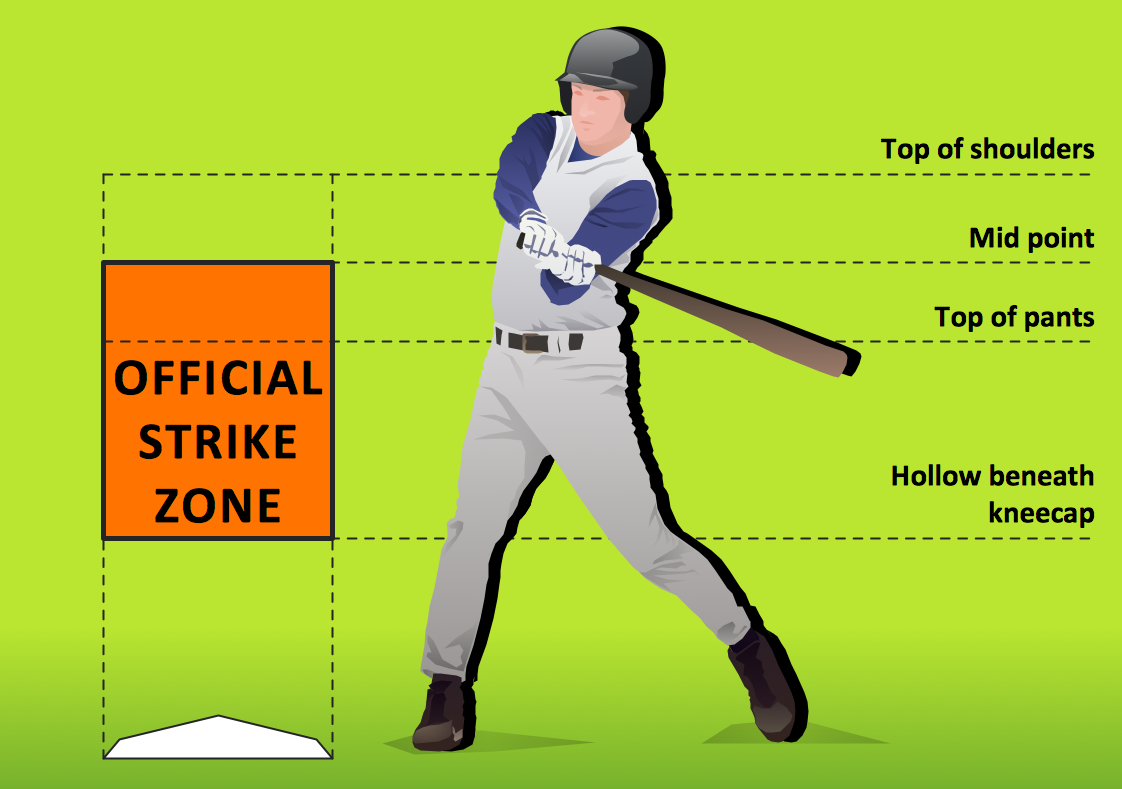The strike zone is an integral part of baseball, determining whether a pitch is considered a strike or a ball. But where exactly is the strike zone located and how big is it?
Let’s dive into the dimensions and size of the strike zone in baseball. Understanding this crucial aspect of the game will enhance your knowledge and appreciation for the sport.
The Evolution of the Strike Zone

To fully grasp the strike zone, it’s important to delve into its history. Over the years, the dimensions of the strike zone have undergone several changes.
In the late 1800s, the strike zone extended from the top of the batter’s shoulders to the knees. This version remained in place until 1950 when the zone was adjusted, covering the area from the batter’s armpits to the top of the knees.
In 1963, further modifications were made, shifting the strike zone from the top of the batter’s shoulders to the knees. This version persisted until 1968, when the zone was adjusted again to span from the batter’s armpits to the top of the knees.
During the period from 1969 to 1987, the strike zone was defined as the area from the batter’s armpits to the top of the knees. This change was implemented alongside the lowering of the pitcher’s mound to address the dominance of pitchers during the 1968 season.
From 1988 until 1995, the strike zone was altered once more, extending from the midpoint between the batter’s shoulders and the top of the uniform pants to the top of the knees.
Finally, in 1996, the current version of the strike zone was established. It stretches from the midpoint between the batter’s shoulders and the top of the uniform pants to a point just below the kneecap.
The Size and Dimensions of the Strike Zone
Now that we understand the historical context of the strike zone, let’s explore its size and dimensions.
The official strike zone is the imaginary space over home plate. It spans from the midpoint between a batter’s shoulders and the top of their uniform pants to a point just below the kneecap. To be called a strike, a pitched ball must cross over part of home plate while within the strike zone.
The width of the strike zone is determined by the batter’s stance and is generally the width of home plate. The upper boundary of the strike zone is the midpoint between the batter’s shoulders, while the lower boundary is a point just below the kneecap.
Frequently Asked Questions
Does the strike zone change based on height?
No, the height of the batter does not change the strike zone. The strike zone remains consistent and is determined by the midpoint between the batter’s shoulders and the top of their uniform pants to a point just below the kneecap.
What is the little league strike zone?
In little league baseball, the strike zone may vary based on the age of the players. It is typically defined as the area from the batter’s armpits to the top of the knees.
Is there a diagram of the strike zone in baseball?
Yes, you can find a diagram of the strike zone in baseball. Many resources, including books and websites, provide visual representations of the strike zone for reference.
How big is a strike zone in baseball?
The strike zone in baseball extends from the midpoint between a batter’s shoulders and the top of their uniform pants to a point just below the kneecap. It is an imaginary space over home plate.
Where is the strike zone in baseball located?
The strike zone in baseball is located over home plate, spanning from the midpoint between a batter’s shoulders and the top of their uniform pants to a point just below the kneecap.
What are the dimensions of the strike zone in baseball?
The dimensions of the strike zone in baseball vary based on the batter’s stance. The width is generally the width of home plate, while the upper boundary is the midpoint between the batter’s shoulders and the lower boundary is a point just below the kneecap.
Has the strike zone in baseball changed over the years?
Yes, the strike zone in baseball has undergone several changes throughout history. From the late 1800s to now, the dimensions have shifted to their current specifications.
How is the strike zone determined in baseball?
The strike zone in baseball is determined by the home-plate umpire. The umpire decides whether a pitched ball crosses over part of home plate while within the designated strike zone.
Now that you’ve learned all about the strike zone, you have a deeper understanding of this important aspect of baseball. The strike zone plays a crucial role in determining the outcome of each pitch and adds to the strategic elements of the game. Keep this knowledge in mind as you watch or play the game, and you’ll appreciate the intricacies of baseball even more.